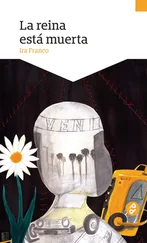I shook hands with Lederberg in a room cluttered with boxes of scientific papers and lantern slides, its walls be-decked with a proliferation of certificates and diplomas. He sat down opposite me, bald-headed and stolid as a Buddha. ‘Well,’ he remarked, his eyes following my gaze with a slight twinkle, ‘they are rather an idiosyncratic collection … I got to microbiology through genetics – through biochemical genetics in particular. My first experience in that area was with your namesake, Francis Ryan, who was my mentor at Columbia University. You don’t have Joseph after your first name?’
I shook my head.
‘A wonderful man. He was the first post-doc to join Beadle and Tatum in their laboratory at Stanford at the very beginnings of biochemical genetics. He was working on mutations leading to nutritional deficiency in Neurospora . I entered Columbia College in 1941. Francis was away that year, but Beadle and Tatum’s paper had just been published and I knew he was there. I just waited for him to come back and pounced on him in his laboratory.’
We had already taken our seats, among the piles of journals and papers as I inched the line of conversation along. ‘But there must have been something even before that that made you go to college with this interest?’
‘Well, that’s a somewhat broader canvas. I can’t give you the ultimate answers to that question. But from the very beginnings of my recollection, from when I was about five years old, I recall that I was devoted to science. I had no doubt I was going into science, probably medical science, so I prepared myself for it.’
‘Was there a history of science in your family?’
‘Not at all. My father was an Orthodox rabbi. I don’t think there was a total disconnection between his vocation and mine, but there was a generational polarity.’
I paused to consider this curious phrase. ‘Perhaps what you had in common was a certain preparedness to discuss life, and perhaps a philosophical attitude of mind might have contributed?’
‘Oh, I think so. Issues of learning, of enquiring … A life in discovery was compatible with my secularism.’
‘Can I ask another question? How old were you when you were awarded the Nobel Prize?’
‘I was 33. They took their time about the award. I was 21 when I did the work.’
Of course, I already knew that the youthful Lederberg began medical studies at Columbia’s College of Physicians and Surgeons, but even then he was inspired by Oswald Avery’s work at the Rockefeller University, which had led Avery to propose that DNA, and not the widely assumed protein, was the gold dust of heredity. This had been critical to Watson and Crick’s later discovery of the chemical structure of DNA, which transformed genetics and our understanding of evolutionary biology. And Joshua Lederberg had played his part in this fabulous story.
Even as a student, he had refused to believe the widely held opinion that bacteria only made identical genetic copies of themselves. It was why he had written to Edward Tatum, Ryan’s postdoctoral mentor at Yale University, asking if he could come and work with them. The first publication to come out of this collaboration was in the names of Lederberg and Tatum and covered less than half a page in the letters columns of the journal Nature , on 19 October 1946. It carried the title “Gene Recombination in Escherichia coli ” – E coli being a common bowel bacterium – and it proved, for the first time, that bacteria can pass on genetic information from one strain to another, a process we now call “bacterial conjugation”. 3In this sense the word “conjugation” is from the same stem as our human term for the “conjugal” rights of marriage. Indeed, at the close of the paper, Tatum and Lederberg had made it perfectly explicit that “These experiments imply the occurrence of a sexual process in the bacterium.”
The piquant truth is that Joshua Lederberg was awarded the Nobel Prize for the discovery of sexual relationships between bacteria.
Sex is a perfectly normal, evolved, behaviour, which is found, sometimes accompanied by beguiling mating rituals, in virtually all animals as well as plants and simpler life forms. The fact that bacteria use a sexual process to swap genetic information is important to medicine, explaining some instances of bacterial resistance to antibiotics. And this topic afforded a perfect springboard for the deeper explorations of our conversation, which lasted most of the afternoon. I was fascinated, in particular, by his long-held view that ‘terrestrial life is a dense web of genetic inter-reactions’. I was keen to hear more of what he meant by the expression.
Perhaps, he suggested, we should look at living organisms as metabolic nets, capable of reaching out and accepting help, at chemical or even genetic level, from other life forms. ‘On the one hand, each life form is coded by its own genetic make-up, but there is an interdependence there. We can’t survive without taking advantage of the genetic machinery of plants.’ Of course, he was referring to photosynthesis, which enables plants to make sugars and amino acids that animals, such as we humans, rely on for life. ‘So, in this sense,’ he insisted, ‘we are symbiotic with plant genes.’
I was interested in his evocation of the concept of symbiosis. It reminded me of the fact that he had referred to symbiosis again and again, in the headings and subject matter of his book chapters and scientific publications. This suggested that he had given careful thought to its role in life. 4
‘There are,’ he explained, ‘marine invertebrate animals that have carried this further, so that instead of bothering to eat plants they embrace algae living inside their skin. Many of the well-known bacterial symbioses with insects are not so fundamentally different from that. In these cases there is an integration of genetic machinery, even though the interacting genomes are still distinct. The symbionts are in different cells, and they could be parted asunder. But I see a continuum between that phenomenon and the kinds of symbiosis where the two organisms occupy the same cell, such as we see in plants with their chloroplasts. It’s not so difficult to extrapolate from that to the evolution of invertebrates, where you have algae living in the epidermal cells. But what we find in the chloroplast has taken the concept further. The primordial chloroplast has itself exchanged considerable numbers of genes with the nucleus. Meanwhile, some genes that were undoubtedly nuclear have found their way into the chloroplasts. So these have not been pure genomes for many aeons.’
I suggested that these ideas would surprise many biologists, and geneticists, who were fixated on the idea of genes being handed down in a simple, vertical, way from parents to offspring.
‘You just need some scaffold to begin your thinking. Then the more you learn the more you realise that the exceptions are almost the rule.’
I was eager to extrapolate this line of reasoning to what really interested me at this stage. ‘The popular conception of a virus is something necessarily nasty, something that infects people and makes them ill – sometimes kills them. But can you conceive that viruses in nature might also have a symbiotic role with animals?’
I was well aware in asking this question that, as early as 1952, Lederberg had published a landmark paper under the title, “Cell genetics and hereditary symbiosis”. 5In this paper he had proposed a new scientific term, the “plasmid”, to cover all sorts of hereditary packages that crossed the genetic divide between different life forms. In this same paper, he stated outright that plasmids were symbiotic organisms that formed part of the genetic inheritance of the life form to which they contributed this new genetic information. From my perspective, this transfer of pre-evolved genetic information was quite different, from an evolutionary perspective, to the Darwinian concept of random changes in the coding sequences of genes arising through errors in copying DNA when cells divided.
Читать дальше












